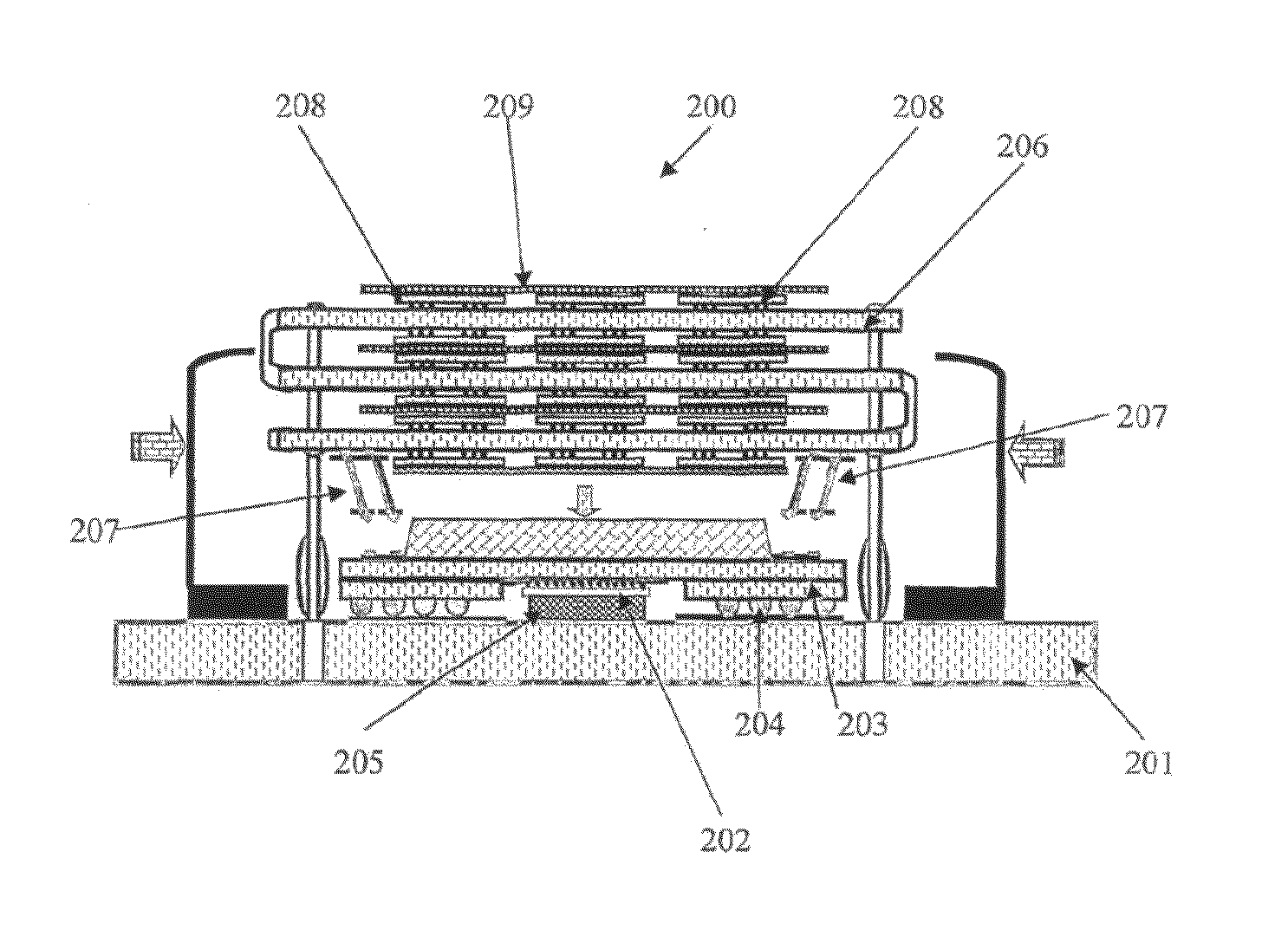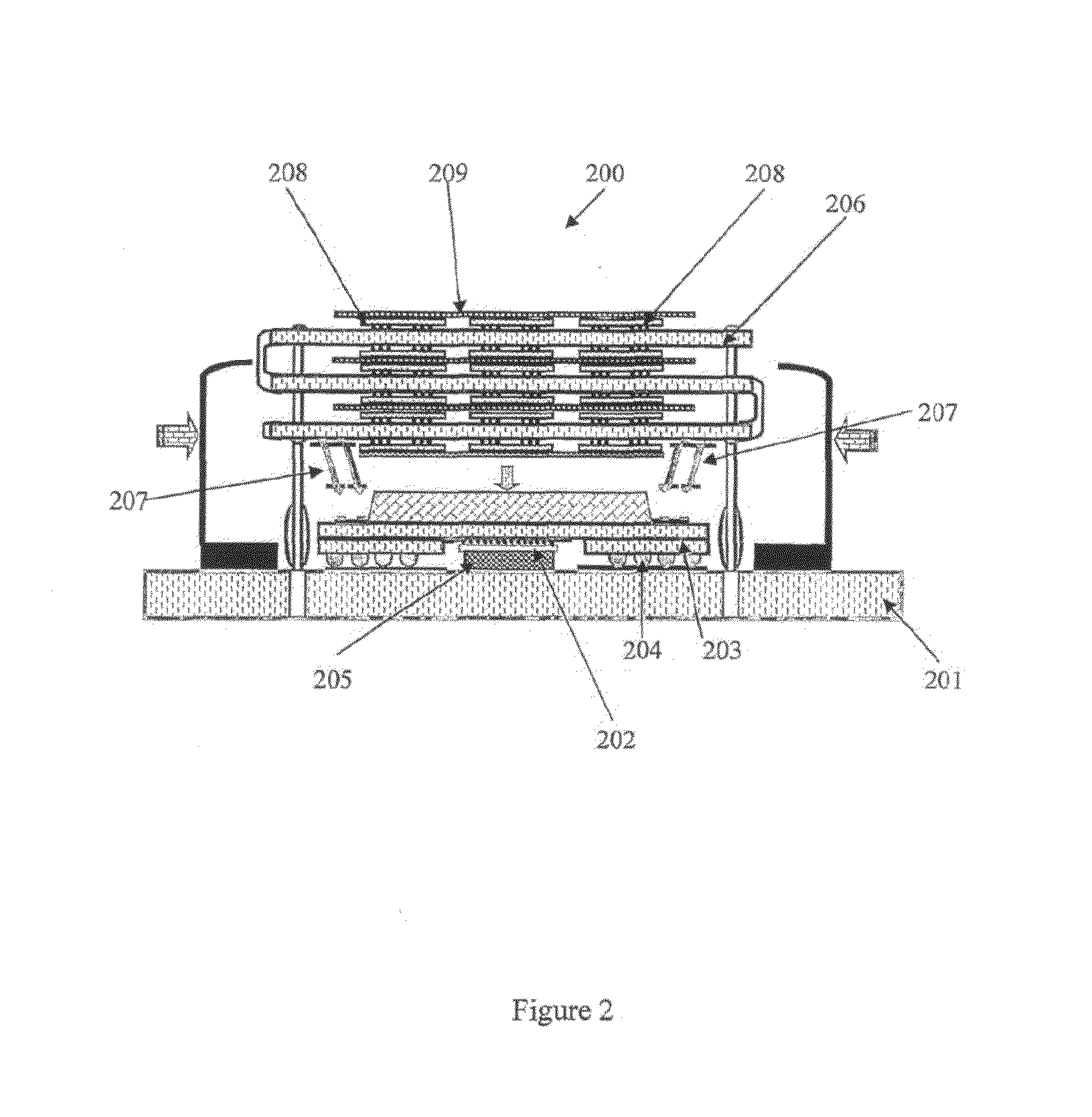Memory module
a memory module and memory technology, applied in the field of memory modules, can solve the problems of limiting the access speed of those subsystems, limiting the ability of those memory systems to provide improved operating speed, and limiting the processing speed of computing devices
- Summary
- Abstract
- Description
- Claims
- Application Information
AI Technical Summary
Benefits of technology
Problems solved by technology
Method used
Image
Examples
Embodiment Construction
[0010]We have now found a memory architecture that provides for high access speed and low powered signalling between the memory module and the memory controller. According to a first aspect of the present invention, there is provided a sub system for a computing device comprising a plurality of chips mounted on a foldable substrate wherein the foldable substrate and the chips are layered by folding the substrate whereby the chips are disposed in at least one stacked configuration and wherein the sub system is adapted to be received on a host board.
[0011]In a preferred embodiment of the present invention the sub system is a memory module for a computing device. In this embodiment there is provided a memory module for a computing device comprising a plurality of memory chips mounted On a foldable substrate wherein the foldable substrate and the memory chips are layered by folding the substrate whereby the memory chips are disposed in at least one stacked configuration and wherein the ...
PUM
 Login to View More
Login to View More Abstract
Description
Claims
Application Information
 Login to View More
Login to View More - R&D
- Intellectual Property
- Life Sciences
- Materials
- Tech Scout
- Unparalleled Data Quality
- Higher Quality Content
- 60% Fewer Hallucinations
Browse by: Latest US Patents, China's latest patents, Technical Efficacy Thesaurus, Application Domain, Technology Topic, Popular Technical Reports.
© 2025 PatSnap. All rights reserved.Legal|Privacy policy|Modern Slavery Act Transparency Statement|Sitemap|About US| Contact US: help@patsnap.com



